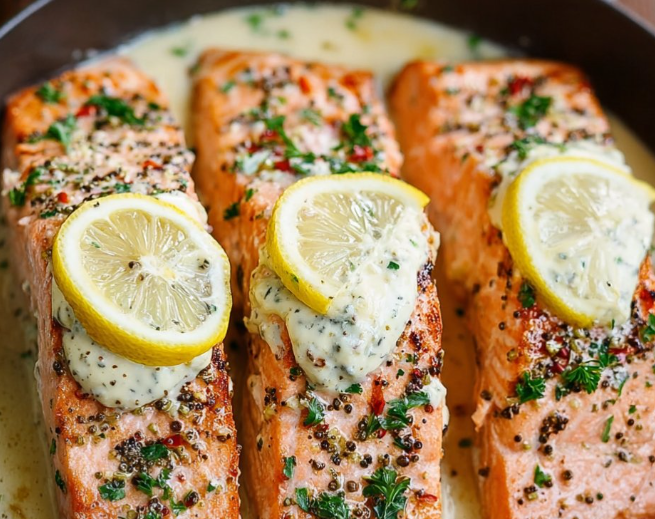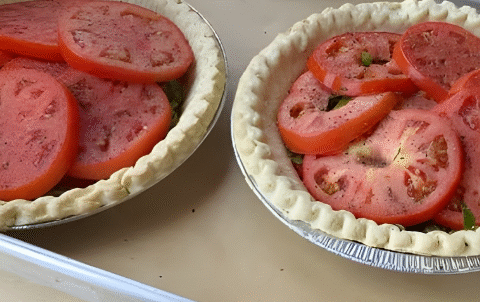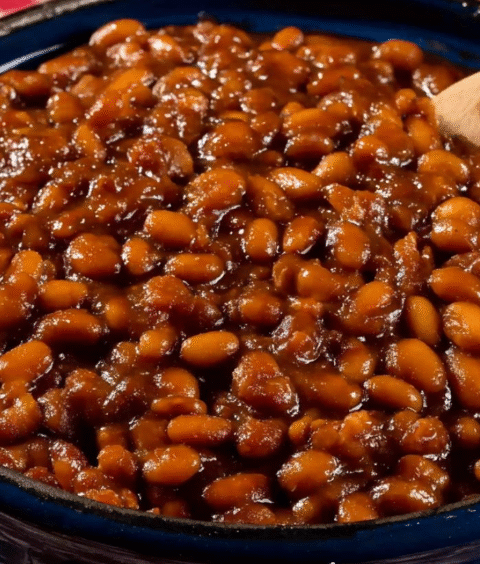Boursin Salmon: Creamy, Herbaceous & Elegant
If you’re looking to elevate a simple salmon fillet into something special, **Boursin Salmon** is the answer. This recipe pairs flaky salmon with a luscious, herby cheese sauce made from Boursin — yielding a dish that tastes gourmet without taking all day.
You’ll get step‑by‑step guidance, chef tips, nutrition details, and FAQs to master it in your kitchen.
Ingredients
Salmon & Aromatics
- 4 salmon fillets (about 6 oz / ~170 g each), skin‑on or skinless (your choice)
- 2 cloves garlic, minced
- 1 small shallot, finely chopped (optional, adds depth)
For the Sauce & Finishing
- 1 package (≈ 5 oz / 150 g) Boursin cheese (e.g. Garlic & Fine Herbs) — bring to room temperature for easier melting
- ¼ to ⅓ cup chicken broth or stock (low sodium preferred)
- 1 tablespoon butter or olive oil (for sautéing)
- Juice of ½ lemon (or 1 full lemon, to taste)
- Salt & freshly ground black pepper
- Fresh parsley or chives, chopped (for garnish)
Step‑by‑Step Instructions
1. Prepare & Season the Salmon
• Pat the salmon fillets dry with paper towels (this helps with browning).
• Season both sides lightly with salt and pepper.
• If the fillets have skin, you may choose to sear skin‑side down first.
2. Sear the Salmon
• Heat a skillet over medium-high. Add a bit of olive oil or butter.
• Place the salmon (flesh-side down) and cook for 3–4 minutes until nicely browned. Avoid moving it too early—let a crust form.
• Flip carefully and cook the other side a bit (a minute or two) — you don’t need it fully cooked yet. Remove salmon to a plate and tent loosely with foil to rest.
3. Sauté Aromatics & Build the Sauce
• In the same skillet (with residual fat), reduce heat to medium.
• Add butter (or a little oil), then sauté shallot (if using) until softened, ~1–2 minutes.
• Add minced garlic and cook briefly (30 seconds) until fragrant.
• Pour in chicken broth and scrape up any browned bits from the pan.
• Add the Boursin cheese, stirring gently until it melts into a creamy sauce.
• Add lemon juice; taste and adjust salt/pepper. If sauce seems too thick, add a splash more broth.
4. Return Salmon & Finish Cooking
• Lower heat to gentle simmer.
• Nestle the salmon fillets back into the sauce, spooning sauce over the top.
• Cover loosely and cook another 3–5 minutes (depending on thickness) until salmon is cooked through (flakes easily).
• Garnish with chopped parsley or chives before serving.
Chef Tips, Variations & Troubleshooting
🔍 Expert Tips
- Don’t overcook the salmon — pulling it off slightly early is safer, as it will finish gently in the sauce.
- If the sauce starts to separate or get too thick, reduce heat and add little extra broth to smooth it out.
- Let the Boursin come to room temperature so it melts smoothly and doesn’t clump.
- If using skin-on salmon, sear skin side first to crisp it; some prefer to discard the skin after cooking.
Flavor Variations & Add‑Ins
- Herb twist: Add fresh dill, tarragon, or basil to the sauce.
- Heat: Add a pinch of red pepper flakes or a dash of cayenne.
- Vegetable boost: Stir in baby spinach or peas into the sauce at the end to wilt.
- Wine touch: Replace part of the broth with a splash of white wine (e.g. Sauvignon Blanc) when deglazing.
- Stuffed version: Create a pocket in salmon and fill it with Boursin mixed with herbs before baking. (Stuffed salmon variant) :contentReference[oaicite:0]{index=0}
- Oven‑baked method: Bake salmon first at ~425 °F (220 °C), then pour on sauce. :contentReference[oaicite:1]{index=1}
Common Issues & Fixes
- Sauce too thick or clumpy: Add more warm broth gradually and stir gently.
- Salmon overcooked/dry: Use medium heat, monitor thickness, and rest lightly under foil.
- Salmon sticking to pan: Make sure pan is hot and fish is dry before searing.
Nutrition & Health Benefits
Below is an approximate nutrition breakdown **per serving** (one fillet with sauce).
Nutritional values vary heavily based on brand, portion size, and exact ingredients.
Nutrition Table (Estimated)
| Nutrient | Approximate Amount |
|---|---|
| Calories | ~ 350‑450 kcal |
| Protein | ~ 25‑30 g |
| Total Fat | ~ 20‑25 g |
| Saturated Fat | ~ 8‑10 g |
| Carbohydrates | ~ 3‑8 g (chiefly from Boursin and broth) |
| Fiber | ~ 0‑1 g |
| Sodium | Varies (can be moderate to high depending on cheese & broth) |
| Omega‑3 Fatty Acids | Good amount (from salmon) |
Health Benefits to Note
- Omega‑3s: Salmon is rich in EPA and DHA, beneficial for heart and brain health.
- High-quality protein: Supports muscle maintenance and satiety.
- Herbs & aromatics: Garlic, shallots, and herbs bring antioxidants, flavor, and microscopic nutrients.
- Moderation of dairy: The Boursin cheese adds richness; serving size and choice of low-sodium broth help balance it.
Food Safety & Best Practices
- Use fresh, high-quality salmon (check for smell and appearance).
- Keep raw fish separate from other foods; wash hands and utensils after handling.
- Cook salmon to a safe internal temperature (~145 °F / 63 °C) or until it flakes easily.
- Don’t leave cooked salmon at room temperature more than 2 hours.
- Store leftovers in airtight containers in the refrigerator; consume within 1–2 days.
- Reheat gently (low heat) to prevent the sauce from separating or fish becoming tough.
Serving Suggestions & Pairings
This creamy Boursin salmon goes beautifully with a variety of sides:
- Steamed or roasted vegetables (asparagus, green beans, broccoli)
- Mashed potatoes, creamy mashed cauliflower, or garlic mashed potatoes
- Rice pilaf, lemon herb rice, or wild rice blend
- Pasta tossed lightly in olive oil or garlic butter
- A crisp garden salad or mixed greens with vinaigrette
- Crusty bread or garlic bread to soak up the sauce
- Lemon wedges for extra brightness
Frequently Asked Questions (FAQs)
- Can I bake the salmon instead of searing?
Yes. One method is to pre-bake the salmon at ~425 °F (220 °C) for 10–12 minutes, then pour the Boursin sauce over and finish by briefly returning to oven or broiler. :contentReference[oaicite:2]{index=2} - What variation of Boursin works best?
Garlic & Fine Herbs is classic and versatile. You can experiment with other flavors like Shallot & Chive or Cracked Pepper depending on your taste. - Is this dish freezer-friendly?
Generally not recommended. Dairy sauces like this tend to separate and degrade in texture when frozen and reheated. - Can I add vegetables into the sauce?
Yes—add spinach, peas, or mushrooms toward the end to wilt gently without overcooking. - How do I reheat leftovers without drying the salmon?
Reheat gently on low heat, covered, and add a splash of broth to loosen sauce. Avoid direct high heat. - Can I reduce the cheese amount for a lighter version?
You can use a smaller portion of Boursin and increase broth or add some Greek yogurt to help creaminess. - Should I remove the salmon skin?
No need before cooking. You can crisp the skin by searing. Some prefer to remove after cooking or leave it for texture. - How thick should fillets be for best results?
Aim for fillets around 1 inch thick—this gives good balance of cooking through without drying out. - Can I use other fish instead of salmon?
Yes—fish like trout, cod, or halibut can work. Adjust cooking time based on thickness. - What sides go best to soak up sauce?
Mashed potatoes, pasta, rice, or crusty bread are ideal to enjoy every drop of the creamy sauce.
Related Recipes & Further Reading
If you enjoy dishes with creamy sauces and seafood, check these out on FreshTonerHungar:
Conclusion
The beauty of **Boursin Salmon** lies in its simplicity yet elegance. With just a handful of ingredients—salmon, garlic, shallot, broth, and Boursin cheese—you can create a restaurant-level dish that’s creamy, flavorful, and comforting. Follow the steps above, adapt the flavors to your liking, and don’t be afraid to customize.
Would you like me to make a printable version, include step‑by‑step photos, or build a lighter version? Just say the word!






